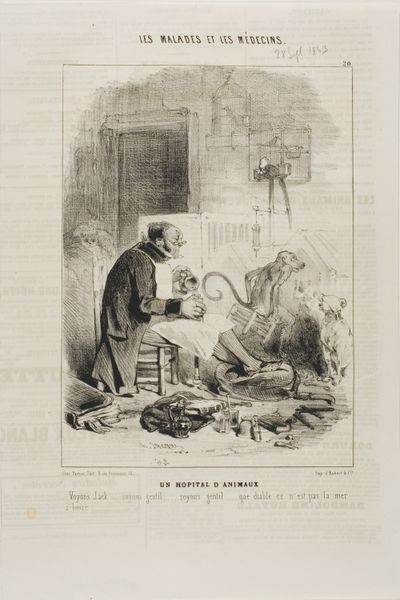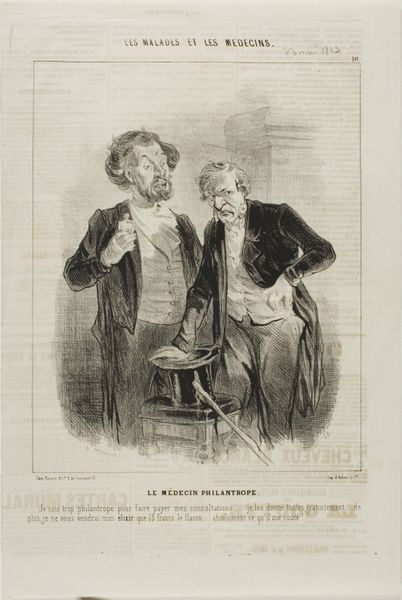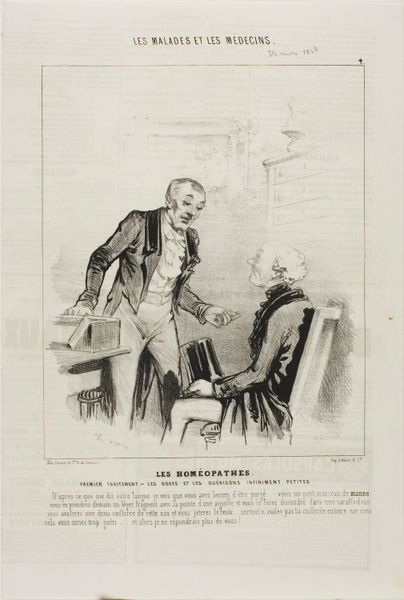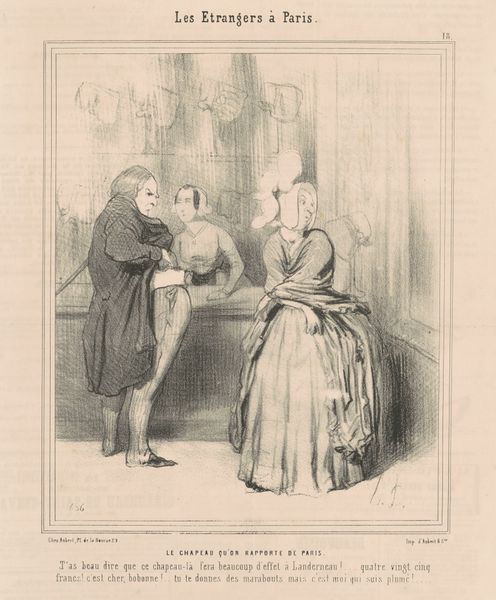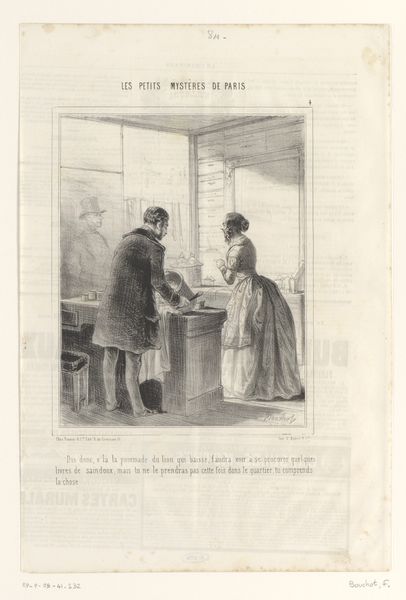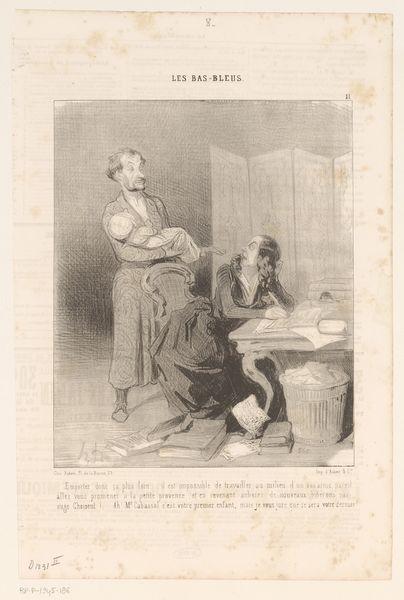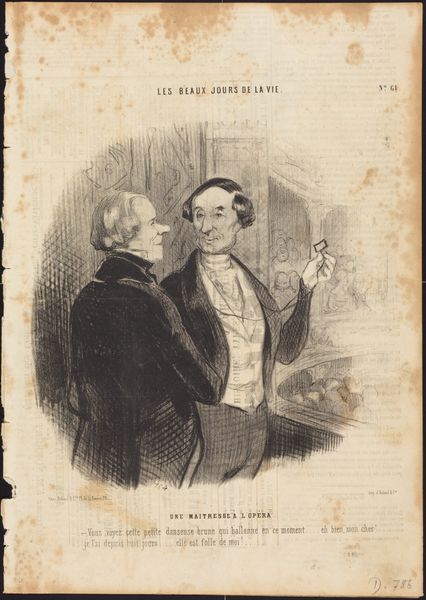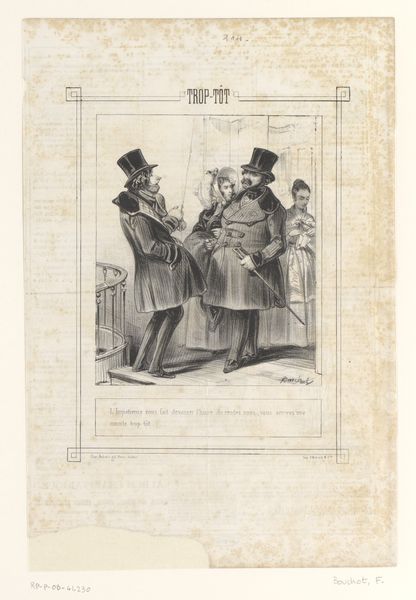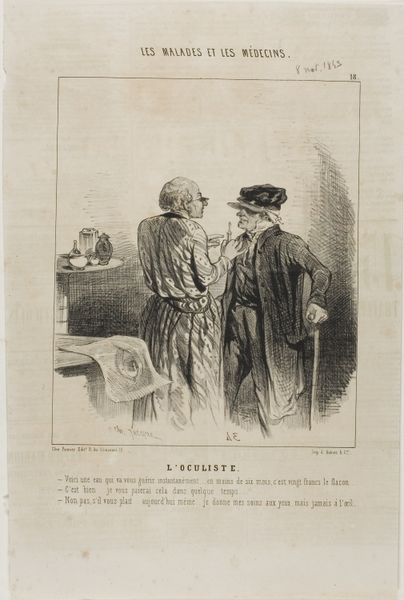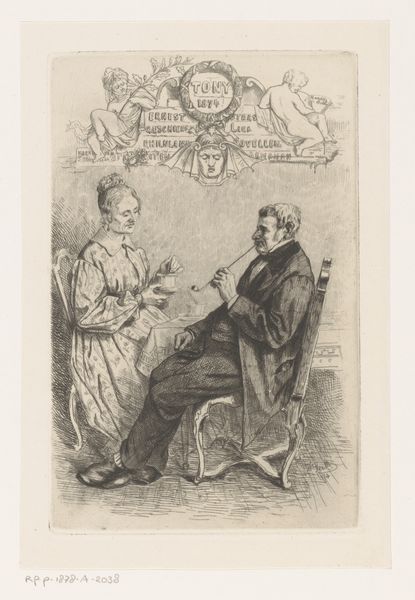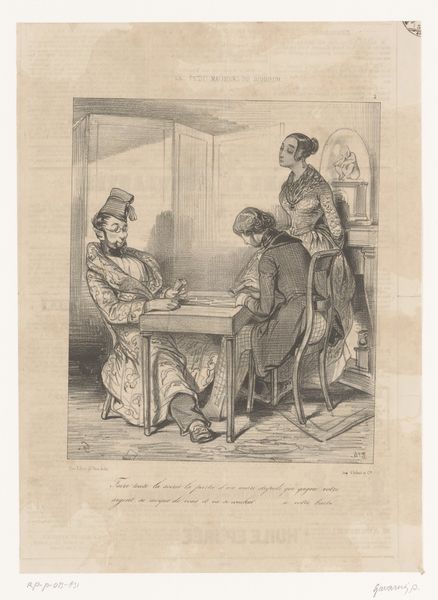
drawing, lithograph, print, paper, ink, graphite
#
portrait
#
pencil drawn
#
drawing
#
lithograph
# print
#
caricature
#
paper
#
ink
#
pencil drawing
#
france
#
graphite
#
genre-painting
#
graphite
Dimensions: 238 × 192 mm (image); 352 × 235 mm (sheet)
Copyright: Public Domain
Curator: This lithograph, "The Invention of a New Chest Elixir (plate 14)" by Charles Jacque, was made in 1843 and currently resides at The Art Institute of Chicago. I’m immediately drawn to its critical depiction of the medical profession. Editor: It strikes me as rather satirical, with exaggerated expressions that suggest charlatanism. I mean, look at the material presence of that comically oversized mortar. What is it even made of? Curator: Indeed, it's a commentary on the era’s questionable medical practices. Consider how lithography enabled the widespread dissemination of such critiques, reaching a broad audience through print culture. Editor: Lithography as a form made accessible criticism. I appreciate how Jacque, through ink and paper, brought attention to the materials being peddled as cures – the snails and lizards mentioned in the inscription add a layer of material absurdity. I can see the means of this medicinal 'production', in all its comical artifice. Curator: Exactly! The context here is crucial; France in the 1840s saw a rise in dubious remedies, exploiting public desperation for quick fixes. This print serves as social commentary, unveiling these schemes through visual satire. The central figure, presumably the inventor, exudes an almost gleeful disregard for genuine healing. Editor: I see this interplay with Jacque's technique. The stark contrast of dark ink on paper emphasizes the absurdity, doesn't it? And that highlights the crudeness of this so called medicinal invention. It exposes the gap between claims and the reality of the substance itself. Curator: And the choice of lithography implies something, too; because it allowed for a faster production that suited newspapers, and so, as commentary, could actually affect politics! It goes beyond pure aesthetic judgement. The public’s perception mattered a great deal! Editor: The texture rendered through the lithographic process provides such clear visual critique – it mirrors, perhaps, the harsh realities these remedies inflicted on bodies. It goes beyond aesthetics—it’s intrinsically tied to labor and material exploitation of both the healers and the healed. Curator: Well, I would conclude that this work demonstrates the power of art to engage in political conversations. The subject invites reflection upon the roles of medicine, profit, and trust. Editor: It is very true. "The Invention of a New Chest Elixir," in all its lithographic, material strangeness, prompts us to reconsider what makes an invention credible, a transaction fair, or a cure genuine.
Comments
No comments
Be the first to comment and join the conversation on the ultimate creative platform.
